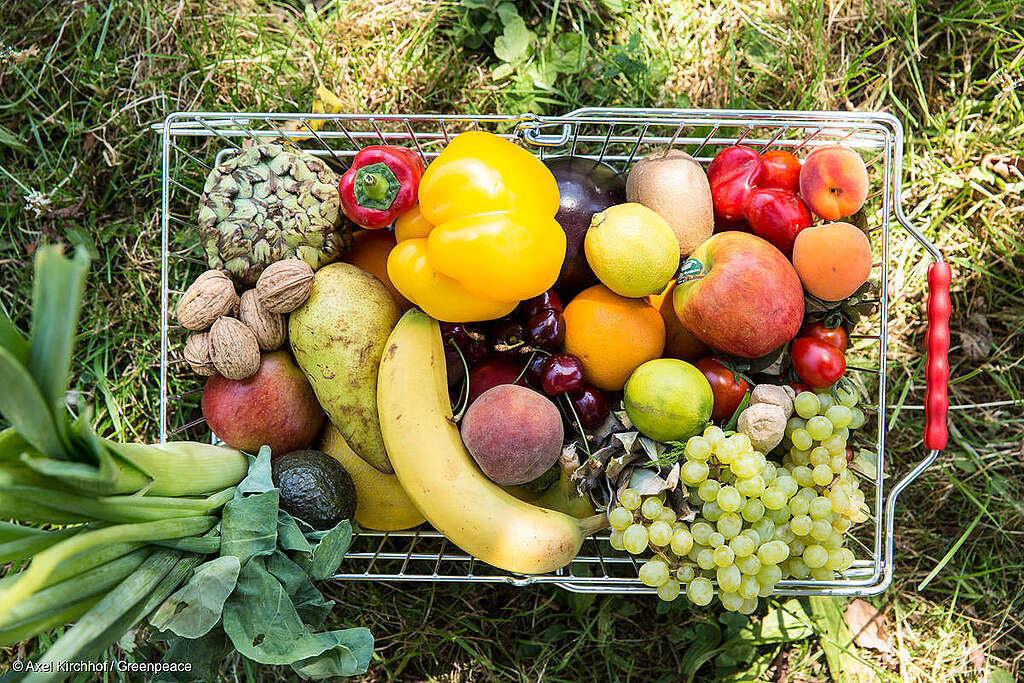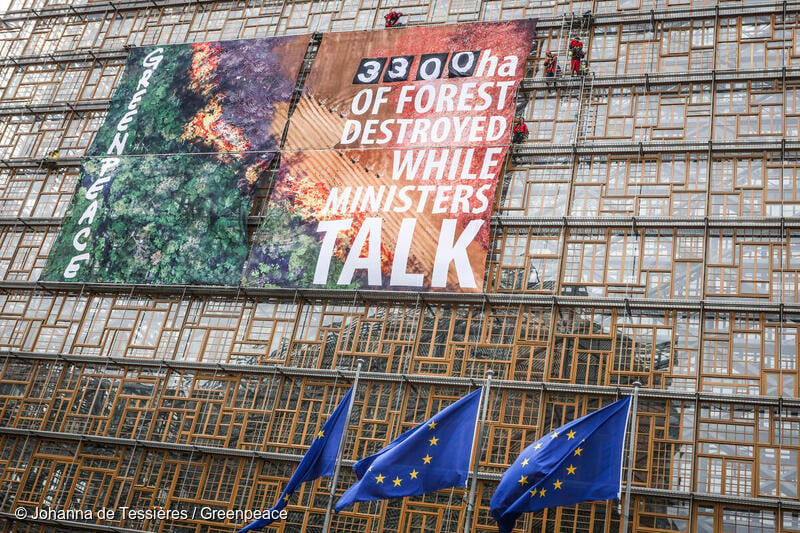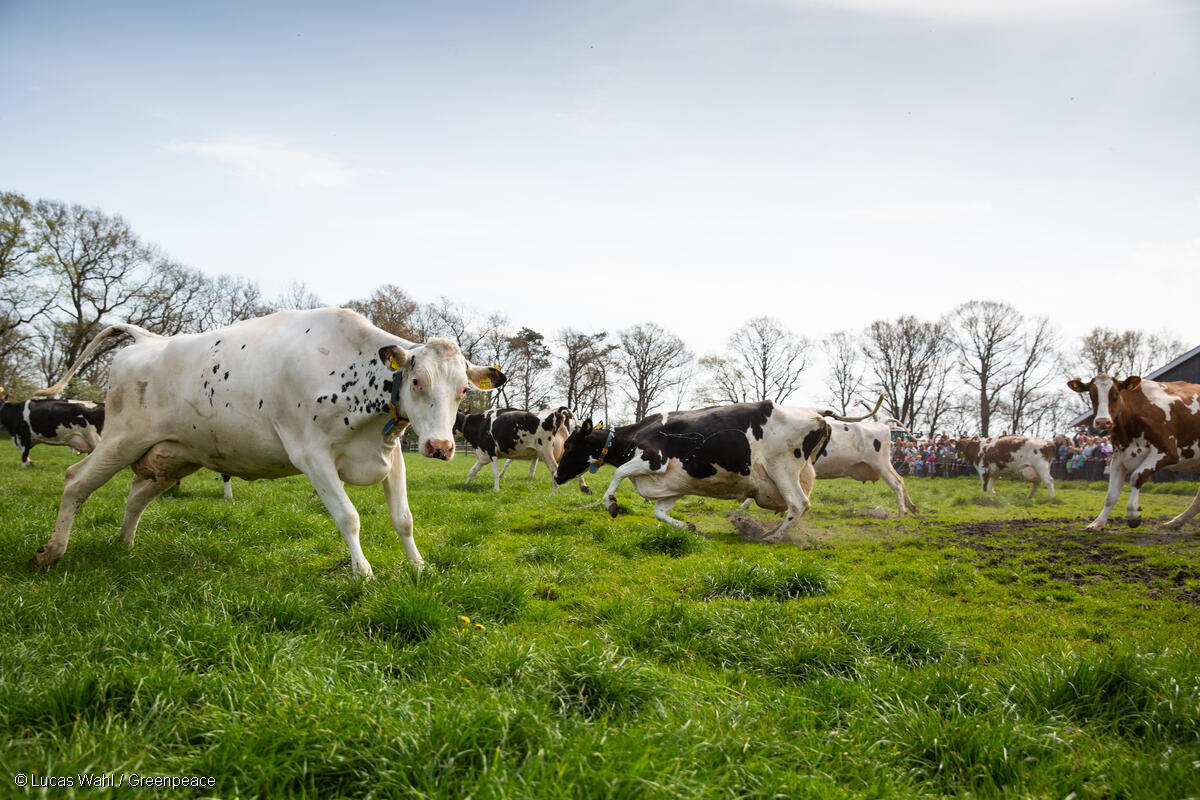Brussels, 7 April 2025 – The European Parliament’s environment committee will vote on Tuesday to start the final phase of negotiations on a controversial draft EU law on a new breed of genetically modified organisms (GMOs). These GMOs are produced with new genomic techniques (NGT). European governments and the European Parliament are divided and the political fight is expected to flare up in 2025. Greenpeace has debunked five of the principle misleading claims used by the biotech industry and politicians who want the EU to deregulate new GMOs.

The proposed law would:
- Remove safety testing and monitoring for 94% of new GMOs, contradicting a ruling by the European Court of Justice,
- Expose people and nature to the potential risks of GM plants produced with new genomic techniques (NGT),
- Remove consumer choice by ending labelling requirements in food products,
- Expose farmers and nature to the risk of contamination as new GMOs are released unchecked into the environment, and increase the grip that just a handful of seed companies have on farmers and small and medium size breeders via patents.
Independent scientists and the national food safety and environment agencies of France, Germany, and Austria have warned about potential risks associated with new GMOs for health and nature.
Debunking five common, misleading claims:
- CLAIM: NGT plants are not GMOs.
The European Court of Justice has ruled that NGT organisms are GMOs. The European Commission and the European Parliament also recognise them as GMOs. In both the law proposal from the Commission and the amendments adopted by the European Parliament, NGT plants are defined as genetically modified plants.
NGTs, such such as CRISPR/Cas, artificially modify the DNA of plants. These modifications can have negative consequences for human health (i.e. toxins and allergens) and the environment (i.e. changed interactions with the animals feeding on them).
- CLAIM: New gene editing techniques (NGT) are precise techniques with no risks and and new GMOs produced with them are equivalent to conventional plants.
The German Federal Agency for Nature Conservation (BfN), the Austrian Environment Agency (UBA), and the French National Agency for Food, Environmental and Occupational Health and Safety (ANSES) have warned that new GMOs can carry risks for human health and the environment, and should be covered by case-by-case risk assessment, traceability, and post-release monitoring.
Even small changes by genetic engineering have a high-risk potential for the environment, according to BfN. “In the context of NGTs any reference to “naturalness” is misleading and not a proxy for reduced risk”, adds the agency.
According to the UBA, NGTs are based “on biological processes that cannot guarantee absolute precision”. Their 2023 report explains that the probability of adverse effects of unintended on- and off-target mutations is high enough to have the unintended changes addressed in the risk assessment (as is the case in the existing GMO legislation).
Changes in the composition of the plant could lead to allergenicity and toxicity problems, according to ANSES. For example, BfN found that the GABA tomato, engineered for increased GABA content (a plant compound which can lower blood pressure), could affect human health due to excessive accumulation of GABA neurotransmitters.
Contrary to older techniques, gene editing allows the modification of a much broader range of plants (including cereals, vegetables and trees) and the Commission proposal covers both crops and wild plants. This means that, in the future, much larger areas could be covered by GMOs increasing the frequency of potential risks. Cultivated surfaces with new GMOs could increase drastically even if only one new one is cultivated, for example wheat or maize, both of which are grown widely across Europe. The Commission proposal removes the right of EU governments to protect their agriculture and environment from the potential risks of new GMOs by restricting the cultivation.
Threats to the environment include the risk of contamination (gene flow) from edited genes to compatible plants (wild or cultivated) and modified interactions with animals visiting those plants, says ANSES. According to BfN, some plants could become invasive. They could spread over large areas and make the control of cultivated areas difficult. Pollination by insects and wind can also occur over long distances.
Once we release new GM plants in nature, in the wild, it will be difficult – if not impossible – to fully recall them if any problems arise.
- CLAIM: New GMOs are banned in Europe and we need them to keep up with the rest of the world.
All GMOs – new and old – are covered by existing EU legislation on GMOs. The existing law does not ban GMOs, but requires:
- Safety checks before they are released into nature and the food chain,
- Monitoring of their impact on nature, and health,
- Labelling in food products.
According to the Court of Justice of the European Union, new GMOs cannot be excluded from the provisions of the existing law, because they do not have a long history of safe use.
It is unlikely that removing these provisions and deregulating new GMOs will speed up their market access, as we can learn from the US who has had a GMO deregulation law in place since 2018. BfN estimates that in 2024 less than 5 new GMOs were cultivated worldwide, including a tomato allegedly lowering blood pressure, a type of lettuce with longer shelf life, or a maize crop with modified starch composition. Agroecological low tech innovation, and the innovation carried out by farmers who select their own seeds to develop diverse, locally adapted crop varieties, known as landraces, and by small- and medium-sized breeders, already offer good solutions to adapt to climate change and to protect biodiversity. This is done without increasing corporate control of our food chain into the hands of a few seed-pesticide companies, which would make our food chain more vulnerable to shocks. If we want agriculture to be resilient to climate change we need agrodiversity. Research shows that in 2022, 189 crop species were cultivated as landraces across 14 European countries, including 107 in Italy, 93 in Greece, 45 in Portugal and 44 in Spain.
- CLAIM: We need to deregulate new GMOs to speed up innovation.
European citizens and nature deserve to be protected.
Safety measures such as safety checks and monitoring included in the existing GMO legislation do not hinder innovation, because the law does not prohibit research and development: it only aims to ensure that what is developed does not breach EU citizens’ rights to health and environmental protection.
In addition, there are many other types of innovation in agriculture. Agroecological low-tech innovation, for example, does not carry potential risks for nature and health and does not belong to just a few pesticide-seed companies. Innovation should benefit society as a whole and not just a few private companies.
Allowing consumers to make informed choices about the food they buy via clear labels allows transparency and freedom of information, without hindering innovation either.
Labelling and monitoring are also important because they allow the identification of GMOs throughout the supply chain and make it possible to intervene in the case of health or environmental problems missed during the safety checks. Without data, it will also be impossible to assess whether the benefits claimed by industry are delivered in the medium- and long-term.
- CLAIM: We need new GMOs to feed the world or help tackle the effects of climate breakdown.
The few new GMOs that have reached the market so far have not delivered on their sustainability promises, such as drought resistance and yields, so we should remain cautious. Drought resistance is in fact largely environment-dependent. There are even examples of new GMOs failing on the market, like the Calyxt gene-edited soybean.
A genetically engineered trait (plant characteristic) does not make an agricultural or natural ecosystem “sustainable”, because ecosystems are complex systems made of all the living organisms existing in them, their interactions between one another and their interactions with the non-living environment.
Also, many new GM plants in the pipeline are not engineered for claimed sustainability purposes or to help farmers adapt to climate change, but to enhance their market value for the agribusiness, for example with an improved appearance, like a pink pineapple.
Download the media briefing here.
Contacts:
Eva Corral, Greenpeace EU GMO campaigner: +32 479 60 12 89, [email protected]
Greenpeace EU press desk: +32 (0)2 274 1911, [email protected]
For breaking news and comment on EU affairs: Bluesky
Greenpeace is an independent global campaigning network that acts to change attitudes and behaviour, to protect and conserve the environment and to promote peace. We do not accept donations from governments, the EU, businesses or political parties. Greenpeace has over three million supporters, and 26 independent national and regional organisations with offices in more than 55 countries.
EU Transparency Register: 9832909575-41



